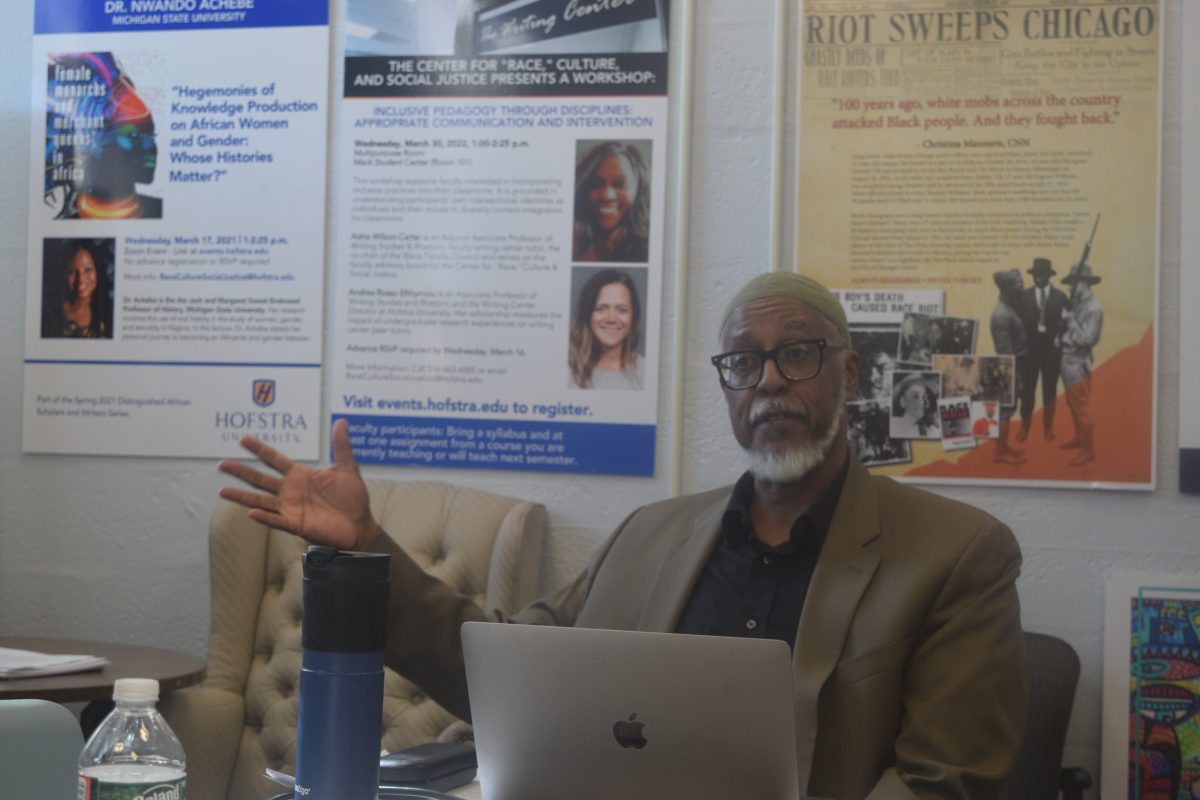Professor Timothy Daniels discussed his recent research on the indigenous Semang, Indians and reflexivity. // Photo courtesy of Eric Munson / BlueLife Media.
The Center for “Race,” Culture and Social Justice hosted its monthly Colloquia Series on Wednesday, Oct. 19, with a presentation by Timothy Daniels, professor of anthropology. Daniels presented his recent research on “Blackness in Malaysia: Indigenous Semang, Indians and Reflexivity.”
Malaysia, a country in Southeast Asia, was colonized by the Dutch in 1641 and by the British in 1824. Malaysia gained its independence in 1948. Due to colonialism, the country consists of a population of multiple ethnic groups which include Chinese, Indians, indigenous Semang and Malays.
“Various scholarly attempts to explain contemporary racism often stress postcolonial racialization and otherness stemming from Malay supremacy,” Daniels said.
Daniels noted that there are high levels of racism and exclusion that persist in Malaysian society. He believes that the “complex connections of colonial white supremacy to postcolonial racial formations have been undertheorized.”
In his research Daniels found that certain ethic groups faced racist practices.
“Anti-Black ideas, actions and policies are complex combinations of white supremacist models and postcolonial Malay supremacist models,” Daniels said.“Two groups racialized as Black, [the Kensiu Semang and Indians], which entailed negative associations in precolonial and postcolonial contexts.”
Evidently, Daniels found that both groups are marginalized and discriminated against in contemporary Malaysia.
“Despite being racialized as Blacks by dominant groups, [both groups] don’t produce oppositional Black identities. Instead, they stress indigenous (Kensiu) and Hindu (Indian) self-identifications,” Daniels said.
Daniels recounted his interviews with indigenous Kensiu Semang and their experiences with Blackness.
Many told Daniels that they had to move from their local lands since they did not have essential services such as stores, hospitals and schools. When he asked about their economic situation, a local Kensiu leader told Daniels, “If you want business, you must pay fees to the government. Kensiu are not brave when it comes to business … They are (lambat) lagging behind other groups … The government has the ability, but it does not give help to everyone.”
Daniels stated that the term lambat was also used to describe the poor outcomes for Kensiu children and adults. In addition, Daniels disscused how a Kensiu person will make mee goreng (fried noodles) and outsiders will not eat their food, but if they open a handcraft business, outsiders will buy their products.
However, this was not the only form of discrimination they faced.
“[They encountered] structural racism in residential and employment matters,” Daniels said.“[Additionally, they faced] rental racism when trying to rent residential units.”
Daniels also narrated his discussion with a local Malaysian Indian Congress (MIC) leader, who told him that the Indians faced racial discrimination in the Malay-dominated civil service.
Upon reflection on his own experience as a Black researcher, Daniels said that there were a few groups he felt a connection with.
“In my relations with Tamil Indians, both Muslims and Hindus, we recognized our common Blackness,” he said.
However, with Kensiu Semang, the experience was different.
“Not once did any of them refer to themselves as Black people (orang Hitam),” Daniels said.“They consistently identified as pribumi Kensiu Semang (indigenous Kensiu Semang) and with the larger category of Orang Asli.”
Students who attended the event reflected on the concept of racism.
“I found the parts where he discussed the stereotypes and discrimination [that] the Semang and Indians face in Malaysia and where he reflected on his own experiences to be the most interesting,” said Madison Elliott, a freshman English major. “It reminded me that no matter where you are in the world or where you’re from, you can’t escape prejudice and discrimination.”
Others connected to the cultural aspects that were impacted by the divide between Malaysian and the Kensiu Samang and Indians.
“This relates to my field of study because within the speech-language pathology field, the majority is white, so there needs to be more diversity, which means more inclusion of all people,” said Danielle DuBois, a junior speech-language and hearing sciences major.
Daniels concluded his discussion by outlining the racial schemas present in Malaysia and what white supremacy introduced during the colonial period.
“[They] constructed a racially stratified ‘plural’ society in which a dominant white minority ruled largely segregated groups of ‘Chinese,’ ‘Indian’ and ‘Malay’ subjects,” Daniels said.







